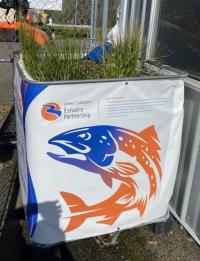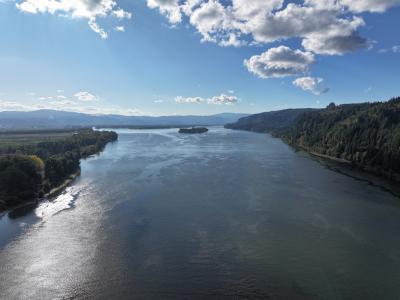Environment
The continued health of our environment and local communities is a high priority for the Port. We are committed to finding a balance between fostering local opportunities to create and sustain jobs while using sustainable practices that keep our land and water clean and safe.
Oregon has high standards for both employers and residents in preserving the natural resources we’ve all grown accustomed to in Columbia County. Environmental considerations are integrated throughout the Port’s strategic planning and business operating decisions.
Our Environmental Policy Includes:
- Complying fully with all applicable environmental laws and regulations.
- Ensuring our customers are in compliance with all environmental regulations and laws as required by leases or permits and encouraging them to take measures beyond the minimum required.
- Working with local representatives to address issues and engage community input as needed for special projects.
- Identifying environmental project opportunities and common goals in collaboration with other local, state, and federal agencies to leverage project resources, as appropriate.
- Working with resource agencies and others to promote healthy watershed and river systems and recreational opportunities.
- Working with regulatory partners to identify appropriate mitigation sites.
Programs and Partners:
- State of Oregon: Department of Environmental Quality (DEQ)
- Oregon Clean Marina
- Lower Columbia Estuary Partnership
- Scappoose Bay Watershed Council
- Oregon Department of Fish & Wildlife
- Columbia Soil and Water Conservation District
Water Efficiency Resources for Industry
Water efficiency programs are an effective way to reduce facility operating costs. Efficient water use can also have major environmental, public health, and economic benefits by helping to improve water quality, maintain aquatic ecosystems, and protect drinking water resources.
While water use varies widely by industry type and by individual facility, virtually all sites can save water by re-evaluating the way water is used. Facility managers are encouraged to explore resources such as A Water Conservation Guide for Commercial, Institutional, and Industrial Users on the EPA's website and other specialized sources like WaterSense. These sources offer detailed guidance and tools to help facilities enhance their water management practices effectively.
Grattix Box for Stormwater
 In collaboration with the Lower Columbia Estuary Partnership the Port installed a Grattix Box at The Paddleshack Paddling Center at Scappoose Bay Marina to reduce runoff pollution and improve water quality on the Columbia River. Developed by environmental engineers at the Port of Vancouver USA, Grattix Boxes are a 275-gallon industrial-grade plastic container layered with wetland plants, soils, sand, and rocks. Combined, these natural materials filter out 90-95% of zinc and 85% of copper from runoff from galvanized metal roofs. Unlike traditional stormwater solutions, Grattix Boxes are installed aboveground, directly below downspouts. The boxes are easy to build and install and offer an affordable solution to stormwater pollution.
In collaboration with the Lower Columbia Estuary Partnership the Port installed a Grattix Box at The Paddleshack Paddling Center at Scappoose Bay Marina to reduce runoff pollution and improve water quality on the Columbia River. Developed by environmental engineers at the Port of Vancouver USA, Grattix Boxes are a 275-gallon industrial-grade plastic container layered with wetland plants, soils, sand, and rocks. Combined, these natural materials filter out 90-95% of zinc and 85% of copper from runoff from galvanized metal roofs. Unlike traditional stormwater solutions, Grattix Boxes are installed aboveground, directly below downspouts. The boxes are easy to build and install and offer an affordable solution to stormwater pollution.

